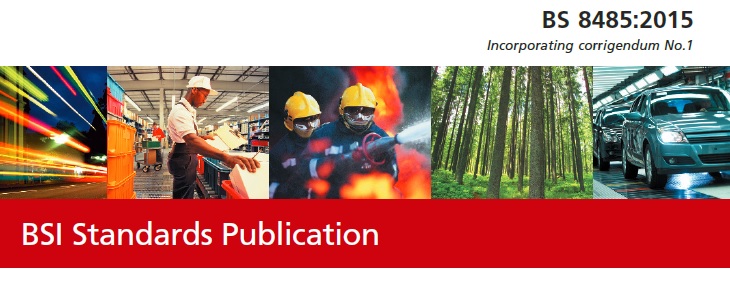I’ve recently had three projects requiring ground gas mitigation in basements.
Radon, methane, carbon dioxide and VOC’s are some of the more common ground gasses. These dangerous gasses are typically found on development sites which aren’t ideal. Sites such as ex-petrol stations, land fill sites, brownfield sites etc.

Whilst far from ideal there are well known mitigation measures when building on sites contaminated with ground gasses. BS 8485:2015 ‘Code of practice for the design of protective measures for methane and carbon dioxide ground gases for new buildings’ provides for three categories or protection measure:
- Structural Barrier
- Ventilation Measures
- Gas Resistant Membrane
That’s all well and good; but with ground gas mitigation in basements things become complicated!
Ground Gas Mitigation in Basements
Getting some gas resistance through the basement structure is an easy win (typically). But if you need more points there are significant challenges.
Ventilation under a basement is a non-starter. Practically speaking achieving sufficient air flow is unlikely and in terms of structural waterproofing this could be a significant problem because this ‘ventilation’ is likely to provide a clear path for water to create a continuous pore and generate a full head of pressure.
Gas Resistant Membranes are an issue because they are of course waterproof, but typically they aren’t designed for or tested for hydrostatic pressure. Most are designed to be loose laid on block and beam floors. Try this on the internal surface of a basement and you generate all sorts of problems/complications.
If you apply a gas resistant membrane to a Type B and or Type A waterproof system you will trap moisture behind the membrane. Whilst ‘water tight concrete’ limits water migrating into the building, movement of water vapour is not prevented. As a result some water will evapourate out of the concrete and collect behind a gas membrane. If you apply a bonded vapour barrier/gas resistant membrane to a Type B concrete (or Type B plus Type A) the prevention of evapouration of water into the internal space could lead to the entire concrete system becoming saturated with the strong likelihood of a continuous pore leading to full hydrostatic pressure applied to the vapour barrier. This is bound to cause de-bonding.
Various waterproofing manufacturers offer external Type A waterproofing membranes which are also ground gas mitigation membranes. My concern with these are several:
- Verification is extremely difficult on a pre-applied ground gas resistant Type A membrane
- A pre-applied membrane comes under significant strains when tones of concrete are cast up against the membrane. This puts joints under significant risk of opening slightly.
- When ground water comes to bear even the smallest defect in the membrane will allow water through and the ground gasses (which are dangerous) will come out of solution when the water is in the basement and no longer under pressure. This makes ‘Combined Protection’ which is standard practice in waterproofing very awkward when ground gasses also require mitigation
- Repairability is an important concern in designing waterproofing systems. Type A membranes which are also ground gas membranes aren’t really repairable once installed.
Using a Type C (drained) system in a basement that also requires ground gas mitigation is difficult as by design you are suggesting that you anticipate some water coming through the structure. Any water coming through the structure suggests that the ground gas is coming through the structure and there is therefore a case to be made that any prior ‘points’ from the structure or a membrane should be discounted.
Finally, if you apply a gas resistant membrane over a Type C system how do you seal the maintenance aspects of the Type C system from gas (and then verify it)?
Having dealt with a few awkward basement projects with a CO2 problem I’ve come across some interesting ideas and learned a few things:
Newton PAC
The Newton ‘Positive Air Curtain’ is a brilliant concept that combines a Type C cavity drain membrane waterproofing solution with a ground gas membrane and ventilation system. In many ways this solves the problem with ground gas mitigation in basements.
One issue I have noticed is that BS 8485:2015 (strictly speaking this is only relevant to new-build properties where mitigation of methane or CO2 is required) states that air pumps should not be used for private residential buildings.
BS 8485:2015 Annex B.3.2.1:
“Active systems involve air pumps and need an electrical power supply; these should not be specified for private residential buildings but can be used for managed buildings, although they are less preferable than passive systems and are also less sustainable.
It seems that the rationale for this restriction is to do with residents turning off electrical supply. I suspect that in a waterproofing scenario there’s room for professionals to go against the guidance of BS 8485 with the obvious requirement to explain their reasoning. In our industry this is not an unusual issue and there are some fantastic telemetry systems out there to help protect the end user.
[Since writing this article I’ve had some great conversations with Newton Waterproofing on this system. A great clarifying point they raise is that the PAC system can be employed without the fan system employed thereby both a gas membrane and passive ventilation.]
Liquid Applied Gas Membranes
I’ve done some research into liquid applied gas membrane products for use in basements. Aside from the issue I’ve already raised around debonding of liquid applied membranes onto concrete I really struggled to find a product with third party certification for CO2 and I heard many technical reps from manufacturers state with utter confidence that CO2 is bigger than methane so if we’ve got certification for methane its fine to use this product for CO2. This is not the case and reduced my confidence in the technical services of manufacturers!
